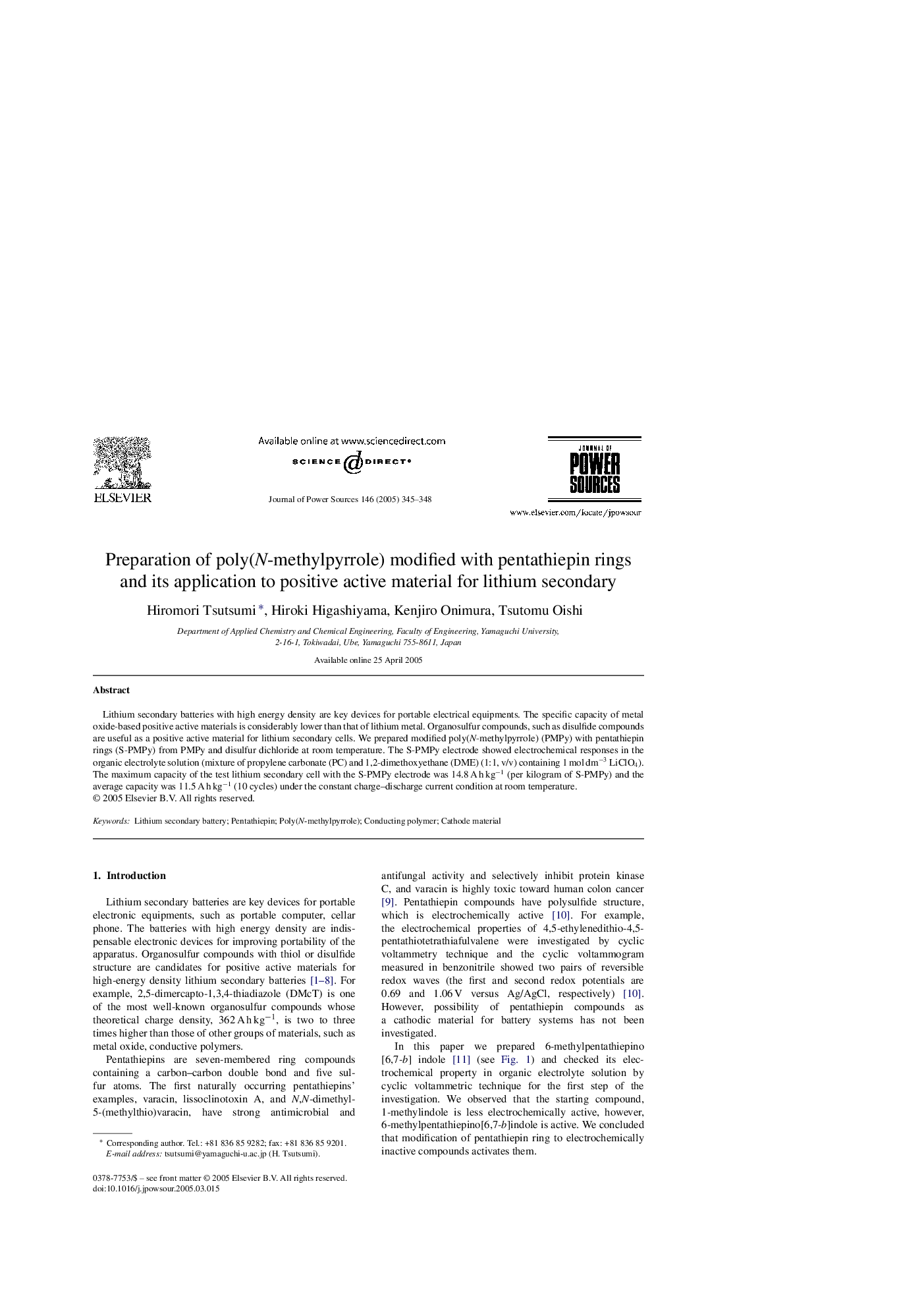| Article ID | Journal | Published Year | Pages | File Type |
|---|---|---|---|---|
| 9760339 | Journal of Power Sources | 2005 | 4 Pages |
Abstract
Lithium secondary batteries with high energy density are key devices for portable electrical equipments. The specific capacity of metal oxide-based positive active materials is considerably lower than that of lithium metal. Organosulfur compounds, such as disulfide compounds are useful as a positive active material for lithium secondary cells. We prepared modified poly(N-methylpyrrole) (PMPy) with pentathiepin rings (S-PMPy) from PMPy and disulfur dichloride at room temperature. The S-PMPy electrode showed electrochemical responses in the organic electrolyte solution (mixture of propylene carbonate (PC) and 1,2-dimethoxyethane (DME) (1:1, v/v) containing 1 mol dmâ3 LiClO4). The maximum capacity of the test lithium secondary cell with the S-PMPy electrode was 14.8 A h kgâ1 (per kilogram of S-PMPy) and the average capacity was 11.5 A h kgâ1 (10 cycles) under the constant charge-discharge current condition at room temperature.
Related Topics
Physical Sciences and Engineering
Chemistry
Electrochemistry
Authors
Hiromori Tsutsumi, Hiroki Higashiyama, Kenjiro Onimura, Tsutomu Oishi,
